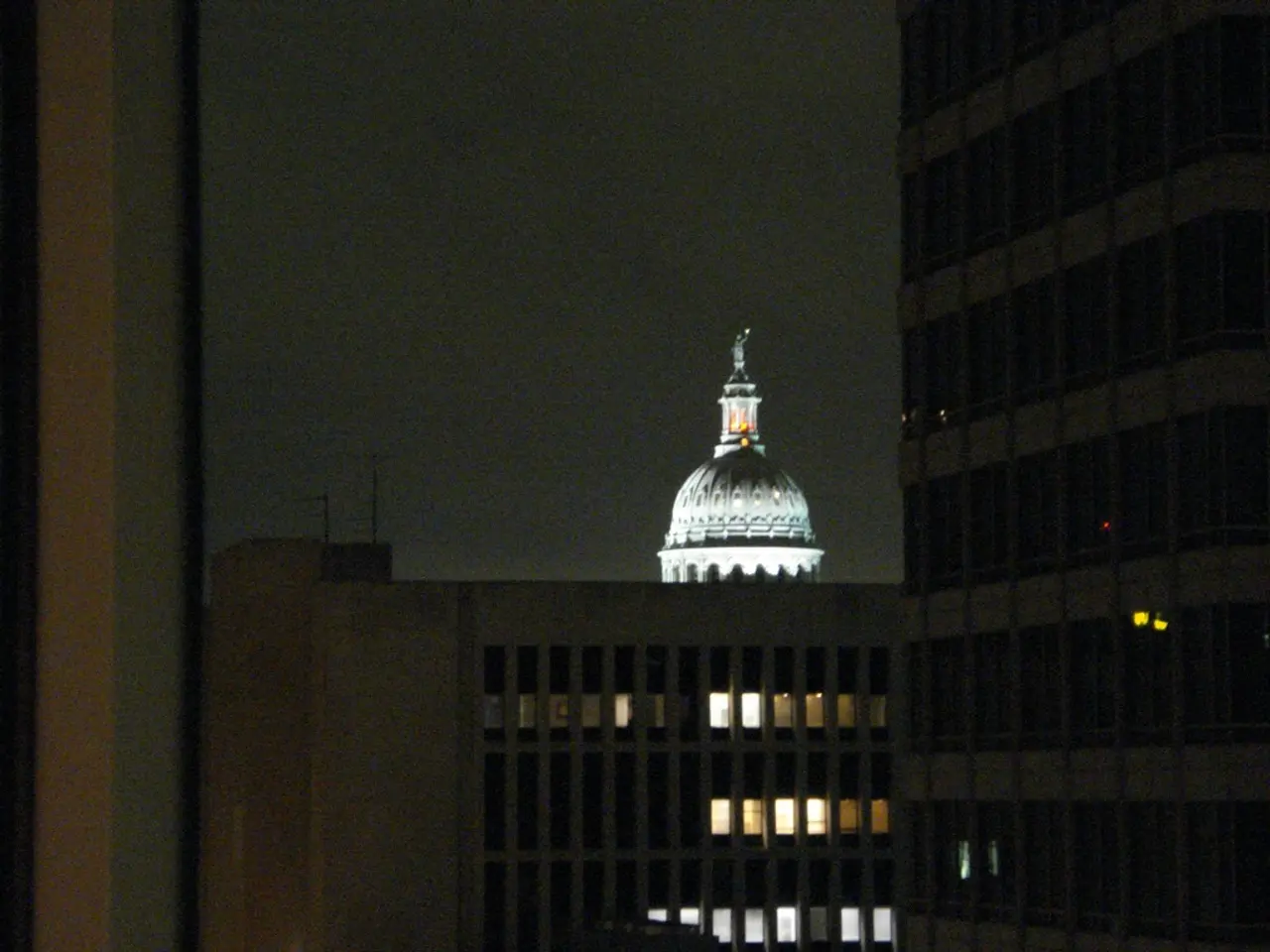Strategies I Employ to Minimize Light Interference During Telescope Viewings
In the pursuit of clearer skies and improved visibility of celestial objects, dealing with light pollution is crucial. This article outlines best practices for managing both ground light pollution and skyglow.
### Ground Light Pollution (Direct Lighting Impact)
1. Employ well-designed, fully shielded light fixtures: These direct light downwards rather than outwards or upwards, preventing light from escaping into the sky and reducing glare that can interfere with night sky observation. 2. Minimise light intensity: Use the lowest effective wattage for outdoor lighting to reduce unnecessary brightness. 3. Choose appropriate light spectral characteristics: Lamps that emit less blue light and avoid wavelengths between 440 to 540 nm (the "P-band") help reduce skyglow because human eyes are especially sensitive to blue and green wavelengths at night. 4. Turn off or dim lights when not needed: Commercial and private lighting, such as brightly lit signs or interior lights, should be turned off during low activity periods. 5. Install blackout curtains for indoor spaces near bright lighting: To minimise indoor light pollution affecting observers, blackout curtains guard against intrusion from street or commercial lights, creating a darker environment necessary for night vision adaptation.
### Sky Light Pollution (Skyglow)
1. Control upward-directed light: Ensure outdoor fixtures are installed with proper shielding and aimed downwards. This prevents light from scattering in the atmosphere and creating skyglow. 2. Adopt lighting policies targeting commercial and private sources: Since public street lighting improvements alone may not reduce overall skyglow due to rising commercial and private lighting, regulations should address all light sources comprehensively to minimise skyglow. 3. Use lighting technologies that minimise upward scattering: LED fixtures designed to limit emissions at wavelengths that produce significant skyglow can help reduce light pollution’s impact on the night sky.
### Summary Table of Best Practices
| Aspect | Best Practice | Purpose/Benefit | |---------------------------|--------------------------------------------------------------|--------------------------------------------| | Fixture design | Use fully shielded, downward-directed light fixtures | Prevent direct upward light and glare | | Light intensity | Use minimum necessary wattage | Reduce excessive brightness | | Spectral control | Use lamps with minimal blue light and shifted spectral flux | Decrease skyglow and preserve scotopic vision | | Lighting management | Turn off/dim lights during low activity | Reduce unnecessary light emissions | | Indoor light intrusion | Install blackout curtains/blinds | Maintain dark indoor environment for eye adaptation | | Regulations and policies | Enforce lighting restrictions on commercial/private sources | Reduce overall skyglow from multiple sources |
These combined strategies effectively address both ground light pollution and skyglow, ensuring better conditions for astronomy and night sky enjoyment. It is also advisable to avoid observing if your atmosphere has severe smoke or dust particles, as they can scatter light and increase the overall brightness and glow of the sky. The SQM, or Sky Quality Meter, is a device used to measure the brightness of the night sky, providing a quantifiable measure of the impact of light pollution. In truly dark sites, stars down to magnitude 7 can be seen. The Bortle scale is another way to describe the level of light pollution in a given area, based on whether you can see the Milky Way, how dim the dimmest stars you see with your naked eye may be, and so forth. In more light-polluted locations, stars as bright as magnitude 4 may elude you.
- Beyond improving conditions for astronomy and night sky observation, managing light pollution contributes to environmental science, particularly in relation to climate-change mitigation, as reduced energy consumption from lighting may help decrease carbon emissions.
- As an intermediate or beginner astronomer, understanding the principles of optics is essential for maximizing the performance of your telescope's eyepieces while minimizing the impact of light pollution.
- In the context of lifestyle choices, adopting practices that mitigate light pollution can lead to a deeper appreciation for the beauty of the night sky, fostering a sense of connection to the universe and encouraging environmental awareness.
- For those interested in space-and-astronomy news, staying informed about advances in technology that promote efficiency in emitted light and minimize light pollution can lead to clearer observations and more meaningful discoveries.
- A scientific study on the impact of light pollution on star clusters and galaxies found that artificial light can distort the shapes of these celestial objects and make it challenging to accurately measure their properties.
- By implementing effective light pollution management strategies, we can minimize the negative effects on the visibility of nebulae, allowing careful observers to appreciate the delicate structures and vibrant colors of these cosmic phenomena.
- In addition to night sky observation, the reduction of light pollution can benefit everyday life, as less scattered light can lead to clearer views of the moon and sun, facilitating accurate solar measurements that are crucial for educational-and-self-development purposes.
- In light of the increasing challenges posed by climate-change and environmental-science issues, it is crucial to advocate for sustainable practices that minimize light pollution, such as adopting energy-efficient lighting and adhering to proper usage guidelines for outdoor fixtures.
- To maintain the balance between urban development and environmental preservation, it is important to consider light pollution management as a complementary aspect of general-news reporting on city planning and growth.
- With a clear night sky free from light pollution, observers can marvel at the deep sky phenomena such as galaxies, star clusters, and nebulae, serving as a gentle reminder of our place in the vast and ever-expanding universe.




